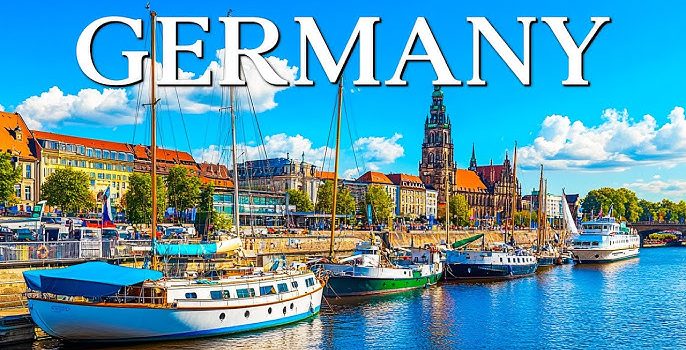
Introduction
Germany is known for its vibrant cities, rich history, and world-class beer. Yet beyond urban centers lie vast stretches of green where you can escape into nature. From dense forests and rugged mountains to serene lakes and deep gorges, Germany’s parks offer a peaceful nature retreat for every outdoor enthusiast. Whether you seek easy family walks, challenging hikes, or wildlife watching, these parks promise fresh air and stunning views. In this guide, we’ll highlight eight of the best German parks, share planning tips, and help you choose your next outdoor getaway.
Explore Top Germany’s Parks Nature’s Retreat
1. Black Forest National Park (Baden-Württemberg)
- Highlights: Towering fir trees, deep valleys, and clear streams
- Activities: Hiking, mountain biking, and wildlife spotting
- Best Time to Visit: June to September
The Black Forest National Park covers over 10,000 hectares of ancient woods. Well-marked trails lead through misty forests and across high plateaus. Keep an eye out for deer, foxes, and rare bird species like the black woodpecker. The park’s visitor center in Klosterreichenbach offers maps and guided tours. After your hike, sample Black Forest cake (Schwarzwälder Kirschtorte) at a nearby café for a true local treat.
2. Bavarian Forest National Park (Bayern)
- Highlights: Europe’s first national park, old-growth spruce forests
- Activities: Canopy walks, wildlife enclosures, winter skiing
- Best Time to Visit: May to October; December to March for snow sports
Bordering the Czech Republic, the Bavarian Forest National Park is a wilderness playground. The Tree Top Walk at Neuschönau rises among the treetops, offering a bird’s-eye view of the forest. Wander through wolf and lynx enclosures at the animal enclosures in Lusen. In winter, cross-country skiing and snowshoeing trails open up. Rustic guesthouses inside the park let you sleep surrounded by forest sounds.
3. Saxon Switzerland National Park (Sachsen)
- Highlights: Red sandstone cliffs, deep gorges, and the Elbe River
- Activities: Rock climbing, hiking, canoeing
- Best Time to Visit: April to October
Despite its name, Saxon Switzerland is in eastern Germany. It features dramatic rock formations like the Bastei Bridge overlooking the Elbe River. Hikers love the Malerweg trail, a multi-day route through forests and narrow ravines. Rock climbers tackle over 1,000 sandstone peaks, from beginner to expert. Canoe trips on the Elbe offer a relaxing alternative. Small villages such as Königstein provide cozy inns and local eateries serving hearty Saxon dishes.
4. Eifel National Park (Rheinland-Pfalz)
- Highlights: Volcano lakes, moorland, and ancient beech forests
- Activities: Geotourism, hiking, cycling
- Best Time to Visit: May to September
Located west of Cologne, Eifel National Park sits on a volcanic landscape. The Maare—crater lakes—sparkle in summer for swimming. A series of educational “georoutes” explains the park’s volcanic origins and mining history. Over 240 kilometers of trails wind through pine forests and heathland. Cyclists can tackle the Vennbahn path, Europe’s longest former rail trail. In autumn, colorful foliage makes for stunning photo opportunities.
5. Harz National Park (Niedersachsen & Sachsen-Anhalt)
- Highlights: Brocken peak, dense spruce forests, and historic mining towns
- Activities: Hiking, historic railway rides, winter sports
- Best Time to Visit: June to September; December to February
The Harz Mountains in central Germany combine natural beauty with mining heritage. The Brocken, at 1,141 meters, rewards hikers with panoramic views and a historic steam railway. Follow the Harz Witches’ Trail (Harzer Hexenstieg) to learn local folklore. In winter, Wurmberg offers skiing and sledding. Towns like Goslar showcase medieval architecture and traditional German festivals. Park rangers lead guided tours on flora and fauna, making it perfect for families.
6. Müritz National Park (Mecklenburg-Vorpommern)
-
Highlights: Lake Müritz, wetlands, and white-tailed eagles
-
Activities: Boating, birdwatching, cycling
-
Best Time to Visit: April to October
Müritz National Park centers on Germany’s largest inland lake, Müritz. This park is famous for water-based activities: rent a kayak or take a boat tour to spot otters and beavers. Over 1,100 plant species thrive in its marshes and bogs. Birdwatchers flock here for ospreys and white-tailed eagles during migration seasons. A network of wooden boardwalks makes wetland exploration easy. Nearby towns like Waren offer lakeside promenades and fresh-caught fish restaurants.
7. Berchtesgaden National Park (Bayern)
- Highlights: Alpine peaks, Königsee lake, and alpine meadows
- Activities: Mountain climbing, boat rides, hiking
- Best Time to Visit: June to September
In Bavaria’s southeast corner, Berchtesgaden National Park dazzles with Alpine grandeur. The emerald-green Königsee lake invites peaceful boat rides to St. Bartholomew’s Church. Trails from Jenner and Watzmann huts lead to rugged summit climbs and wildflower meadows. Summer mountain huts serve hearty Bavarian meals. In winter, nearby ski resorts offer slopes for all levels. The park’s strict conservation rules keep the landscape pristine for future generations.
8. Hainich National Park (Thüringen)
- Highlights: Ancient beech forests, UNESCO World Heritage site
- Activities: Canopy walks, guided nature talks, biking
- Best Time to Visit: April to October
Hainich National Park protects the largest block of deciduous forest in Germany. UNESCO named it a World Heritage site for its ancient beech woodlands. A canopy walkway—built high among tree tops—gives a rare forest perspective. Ranger-led tours teach about rare species like wildcats and dormice. Over 130 kilometers of trails suit hikers and mountain bikers. Autumn’s golden leaves make the forest floor glow, creating a magical retreat.
Planning Your Visit to Germany’s Parks
- Book Early: Popular parks fill campsites and hut beds quickly, especially in summer.
- Local Transport: Many parks have train stations nearby; rent a bike or use shuttle buses for deeper trails.
- Permits and Fees: Check park websites for entry fees, guided tour sign-ups, and seasonal restrictions.
- Gear Up: Bring sturdy boots, weatherproof layers, maps or GPS, and reusable water bottles.
- Respect Nature: Stay on trails, pack out all trash, and observe wildlife quietly.
Conclusion
Germany’s parks offer a true nature retreat for every kind of traveler—family outings, solo hikes, or adventure trips. From the ancient beech forests of Hainich to the Alpine peaks of Berchtesgaden, each park brings unique landscapes and activities. Whether you paddle on Müritz’s calm waters or climb over red sandstone in Saxon Switzerland, fresh air and stunning views await. Plan your 2025 adventure with early bookings, proper gear, and respect for the environment. You’ll return home refreshed, inspired, and with memories of Germany’s most beautiful green spaces.








